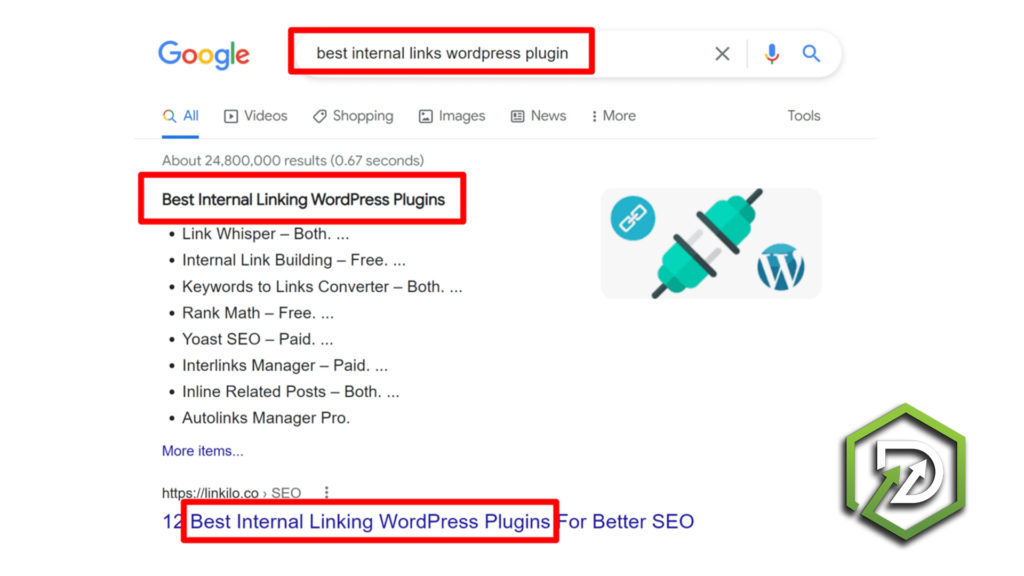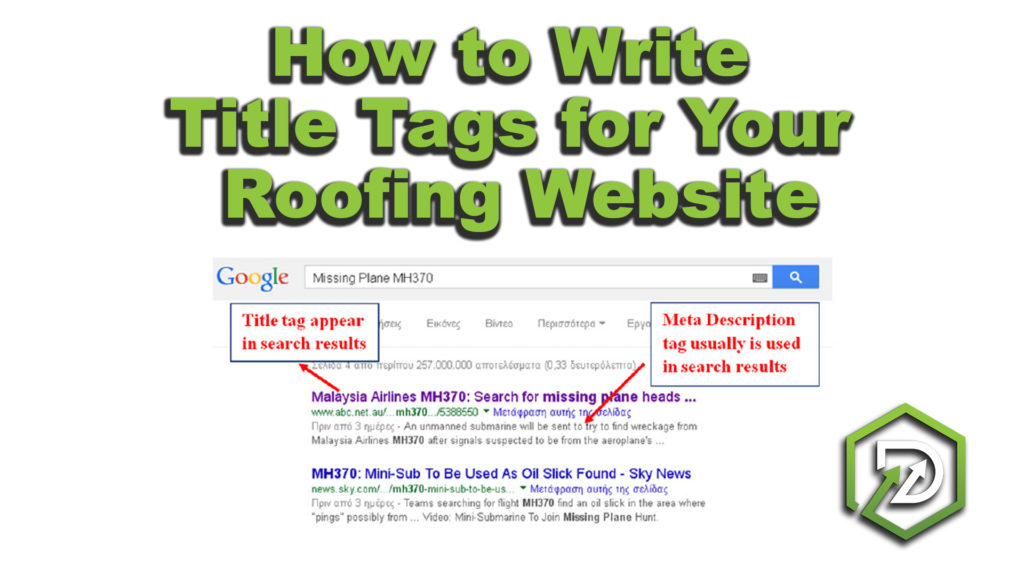DIGITAL MARKETING, LOCAL SEO, SEO
How to Write Title Tags for Your Roofing Website
As a roofing company, having a website is crucial in today’s digital age. But simply having a website isn’t enough. To stand out among the competition, you need to optimize your website for search engines, and an essential aspect of that is writing effective title tags.
This write-up will discuss how to write title tags for your roofing website. By the end of this article, you will clearly understand what title tags are, why they are important, and how to write them for your roofing website.
What are Title Tags?
Title tags are HTML tags that define the title of a web page. They appear in the browser tab and the search engine results pages (SERPs). A title tag should accurately and concisely describe the page’s content.

Why are Title Tags Important?
Title tags are important because they are the first thing people see when they come across your website in the SERPs. They can influence whether someone clicks on your website or not. A well-written title tag can improve your click-through rate (CTR), leading to higher rankings and more traffic to your website.
How to Write Effective Title Tags
Now that you understand what title tags are and why they are important let’s dive into how to write effective title tags for your roofing website.
Keep it Short and Sweet.
Title tags should be between 50-60 characters. This length ensures that your title tag won’t get cut off in the SERPs. Include your primary keyword in the title tag, but don’t use too many keywords. Focus on creating a concise and clear title that accurately represents the content on the page.
Focus on the User
When writing title tags, always keep the user in mind. What would make them click on your website? What would they be searching for? Your title tag should accurately represent the content on the page, but it should also be compelling enough to make someone want to click through to your website.
Include Your Brand Name
Make sure to include your brand name in the title tag. This helps with brand recognition and can also improve your CTR. If someone is familiar with your brand, they may be more likely to click on your website.
Use Vertical Bars or Hyphens
Use vertical bars (|) or hyphens (-) to separate different parts of the title tag. This makes it easier to read and can improve your CTR.
Avoid Duplicate Title Tags
Each page on your website should have a unique title tag. Avoid using the same title tag for multiple pages, which can confuse search engines and hurt your rankings.
Don’t Overthink it
While title tags are important, don’t spend too much time overthinking them. Focus on creating a clear and concise title that accurately represents the content on the page.

Frequently Asked Questions (FAQs)
1. What happens if I don’t write title tags for my roofing website?
Search engines will generate a title based on the page’s content if you don’t write title tags for your roofing website. While this may seem like a good idea, it can often result in generic and unappealing titles that won’t encourage people to click through to your website.
2. Can I use the same title tag on my roofing website for multiple pages?
No, each page on your roofing website should have a unique title tag. Using the same title tag for multiple pages can confuse search engines and hurt your rankings.
3. Should I include my brand name in the title tag?
Including your brand name in the title tag is a good idea. This helps establish your brand and make it more recognizable to potential customers and improve your click-through rate (CTR) by making your website stand out in the SERPs.
When including your brand name in the title tag, it’s essential to do so in a way that doesn’t take away from the rest of the title. One way to do this is to place your brand name at the end of the title, separated by a vertical bar or a hyphen. This helps to identify the source of the content while also providing additional context for users.
For example, if your roofing business is called “ABC Roofing,” a good title tag for your homepage might be:
“Roofing Services | Residential & Commercial Roofing – ABC Roofing“
This title tag effectively communicates your business’s primary focus while including your brand name at the end. This approach helps improve your branding while providing additional context for users, which can improve your CTR and overall search engine rankings.
4. How many characters should my title tag be?
Your title tag should be between 50-60 characters. This ensures that it won’t get cut off in the SERPs.
5. Can I stuff my title tag with keywords?
No, you should avoid stuffing your title tag with too many keywords. This can hurt your rankings and make your title tag look spammy. Focus on creating a concise and clear title that accurately represents the content on the page.
6. How often should I update my title tags?
You should update your title tags whenever you make significant changes to the content on your page. This can include adding new services, updating your service areas, or changing the focus of your business.
Conclusion
In conclusion, writing effective title tags is essential to optimizing your roofing website for search engines. Title tags are the first thing people see when they come across your website in the SERPs, so making them compelling and concise is essential. By following the tips outlined in this article, you can write effective title tags that accurately represent the content on your roofing website and encourage people to click through to your website.
Remember to keep your title tags short and sweet, focus on the user, include your brand name, use vertical bars or hyphens to separate different parts of the title tag, avoid duplicate title tags, and don’t overthink it. With these tips, you can create title tags that improve your CTR, leading to higher rankings and traffic to your roofing website.
So, if you want to make your roofing website stand out, don’t forget to write effective title tags!

